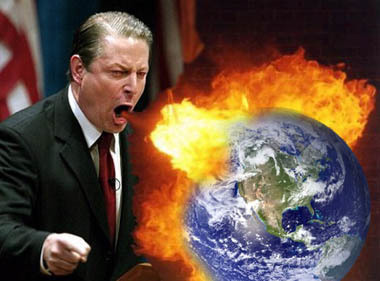[This article was originally published in the Alumni magazine of the Hotchkiss School]
Many readers will surely agree with me that Hotchkiss launched us into successful and fulfilling careers, mine as a scientist, physicist and engineer continues actively 60 years past graduation. Among my specialties has been the study of climate, present, past and future, ever since the 1970s when the popular press was warning of an advancing ice age, and on into the 90s when global warming took over with unsubstantiated anecdotal evidence and mathematical models. Models that are unable to calculate past temperatures when all the variables are known, or the future whether a year or 10 down the road. They continue to predict doom a century from now if mankind does not alter its proclivity to lighten man’s burden with inexpensive fossil fuel.
The pages of this amazing magazine have promoted this unwarranted fear and unmitigated arrogance as to man’s impact on his climate. Happily they have offered me the use of 750 words to try and set the record straight or at least level the playing field with some irrefutable scientific facts.
1 – While temperatures have fluctuated over the past 5000 years, today’s earth temperature is below the average for these past 5000 years.
2 – Temperature fluctuations during the current 300 year recovery from the Little Ice Age, which ended around the time Washington’s soldiers were freezing at Valley Forge, correlate almost perfectly with our sun’s changes in activity level.
3- The National Aeronautic and Space Agency (NASA) has determined that during the time the Earth was warming in the past century so was Mars, Pluto, Jupiter and the largest moon of Neptune.
4- We know that 200 million years ago when the dinosaurs walked the Earth, average Carbon Dioxide concentration in the atmosphere was 1800 parts per million, more than four times higher than today.
5- If greenhouse gases were responsible for increases in global temperature, then atmospheric physics shows that higher levels of our atmosphere would show greater warming than lower levels. This was not found to be true during the 1978 to 1998 period of .3 degrees centigrade warming.
6- 900.000 years of ice core temperature records and carbon dioxide content records show that CO2 increases follow rather than lead increases in Earth temperature which is logical because the oceans are the primary source of CO2 and they hold more CO2 when cool than when warm, so warming causes the oceans to release more CO2.
7- The effect of additional CO2 in the atmosphere is limited because it only absorbs certain wave lengths of radiant energy. As the radiation in that particular wave length band is used up, the amount left for absorption by more of the gas is reduced.
8- While we hear much about one or another melting glaciers, a recent study of 246 glaciers around the world indicated a balance between those that are losing ice, gaining ice, and remaining in equilibrium.
9- It is amusing that the polar bear has become the symbol of global warming while its North American population has increased from 5000 in 1960 to more than 25,000 today.
Although the court of public opinion already weigh climate change as a very low economic priority, the media continues to uncritically accept and vigorously promote shrill global warming alarmism. The United States government budgets $6 billion a year for climate research supporting a growing industry of scientists and university labs that specialize in the subject. It all adds up to a significant institutionalization of the impulse to treat carbon as a problem.
Climate change is not a scientific problem that found political support. It is about eco-activists and politicians who found a scientific issue they feel can leverage them into power and control. The environment is a great way to advance a political agenda that favors central planning and an intrusive government. What better way to control someone’s property than to subordinate one’s private property rights to environmental concerns.
While the most extreme environmental zealots may be relatively few in number, they have managed to gain undue influence by exploiting the gullibility of many ordinary and scientifically untrained people, willing to believe that the planet needs saving from man’s excesses. Perhaps it is a psychological throwback to those earlier civilizations that offered human sacrifices to the gods, to assuage their sins and spare them from punishment in the form of drought, flood, famine or disease. There are certainly many parallels between modern environmentalism and religion.





